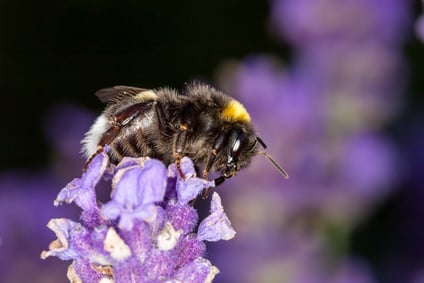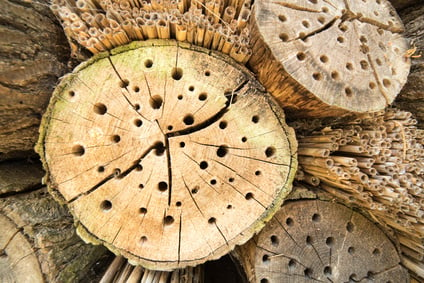How to make your garden bee friendly

Bumblebee On Lavender
A bee friendly garden may seem like an odd concept. Some people are not keen on bees at all. They may get in your picnic sandwiches, annoy you and you may be allergic to their stings but like it or not, as a species, humans really need the bees. If we had no bees, we would not survive long. They pollinate a massive percentage of the world’s food (around a third) and crops and plants of all types depend on this pollination.
The crops that bees are responsible for pollinating, and therefore keeping going, include apples, french beans, runner beans, broad beans, coffee, cucumbers, apricots, blueberries, peppers, walnuts, peaches and many crops that feed our dairy cattle. The list goes on and the result of losing all, or even some, of these crops, could be catastrophic.
Around thirteen species of bee are already extinct, with almost three times as many species under threat.
So. Why not make your garden bee-friendly? Create an eco-system that suits bees and assist in growing the population. It will help the bees and might even help your growing efforts.
Where do you start?
1. Well, you could start by growing plants and flowers that attract the bees. For example, in the spring try viburnum, daffodils, pussy willow and crocuses are good, in summer poppies, sweet peas, delphiniums, and later in the summer Buddleia, dahlias, cornflowers, honeysuckle, lavender, echinacea, broom, foxgloves and nasturtiums and fuschias from summer into autumn.
Not only do the bees like all these, we tend to like them too and what a great way to mix helping bees survive, with growing flowers that make us happy.
Herbs bees like, include sage, thyme, marjoram, borage and chives (though you need to let them flower) Letting some of these herbs flower, which many herb gardeners don’t like, will not only encourage the bees. Used in cooking and salads the flowers of herbs are often more fragrant and delicious than the stems.
Other bee-friendly flora includes the highly scented Bergamot (sometimes known as ‘bee balm’ and comfrey (which makes great compost).
2. Don’t use pesticides in a bee-friendly garden, It has been argued that the chemicals used in pesticides are the main reason for the decline in the bee population over the last decade. At the very least, limit your use and if you have any pesticides containing Neonicotinoids get rid of them, responsibly, as they are particularly harmful to pollinators, have been banned temporarily and are now on the way to being fully banned.
3. Plant clumps of flowers in sunny spots, try to avoid shady areas as bees are less likely to pollinate there.
You could allow a small part of your garden, or plot, to go wild, plant wildflowers from seed and let the grass grow a bit to provide shelter as well as food.
4. Create temporary homes for bees. You don’t have to build a hive and become a beekeeper, you can easily provide accommodation for bees in your garden. You can buy ‘bee hotels’ or make them by bundling together hollow stems or bamboo or even finding a log and drilling a number of deepish holes in it (around 2 – 10mm wide) and hang or place these at head height in a sunny, south facing area.
You can also provide shelter from the weather for solitary bees by leaving some broken plant pots, with a way in, on the soil in shady areas.
You can even create a wood pile with spaces in a corner of the garden that you let decay, that can become a micro-habitat for bugs including bees

Bee Hotels
5. If you plant trees, think of bees. Bees like cherry trees, willow, plum and hazel trees. Holly bushes and hedges, apple trees and pear trees that produce a large crop of flowers are popular too.
If you do all or just some of these things, you can make a bee friendly garden and help the bee population survive. Good luck.